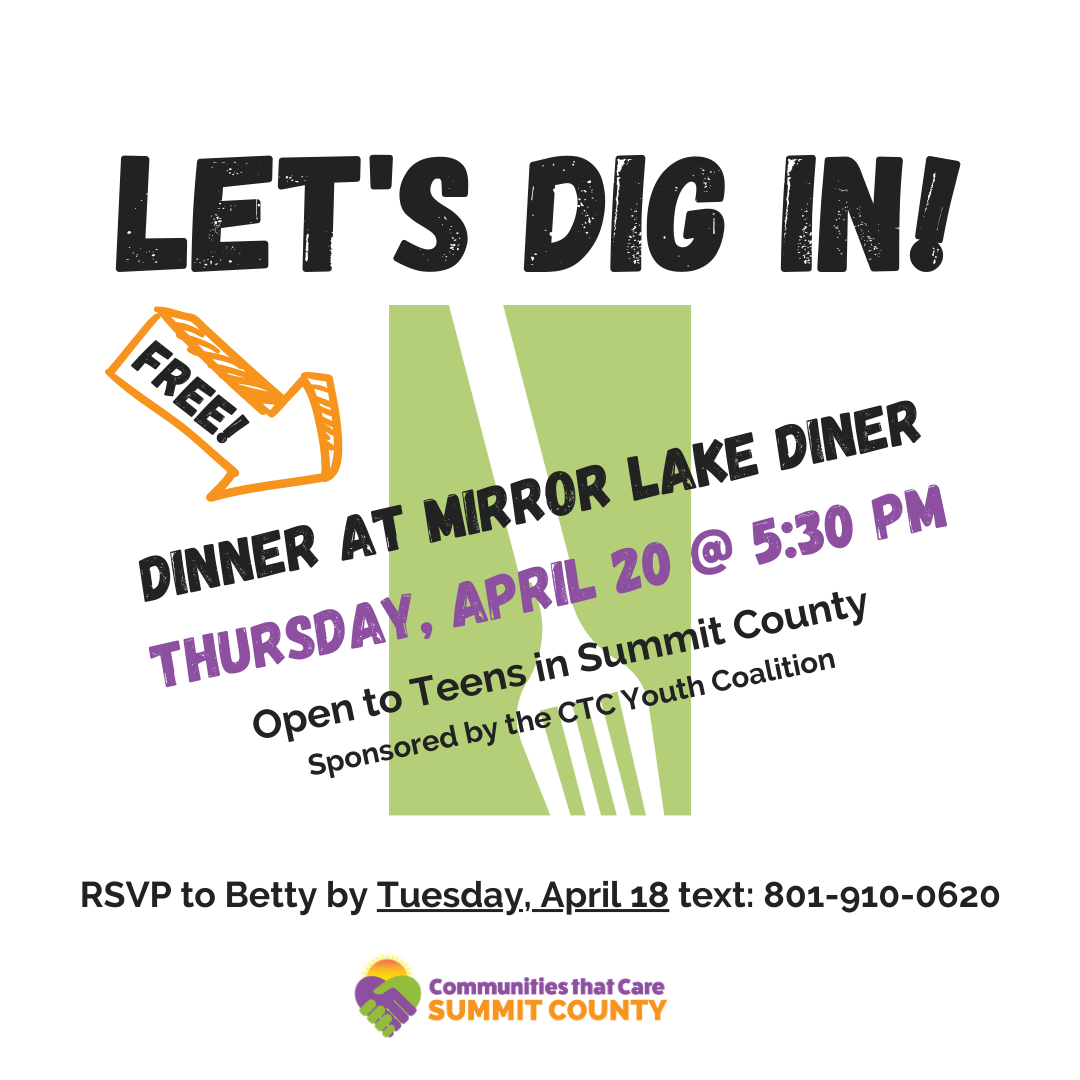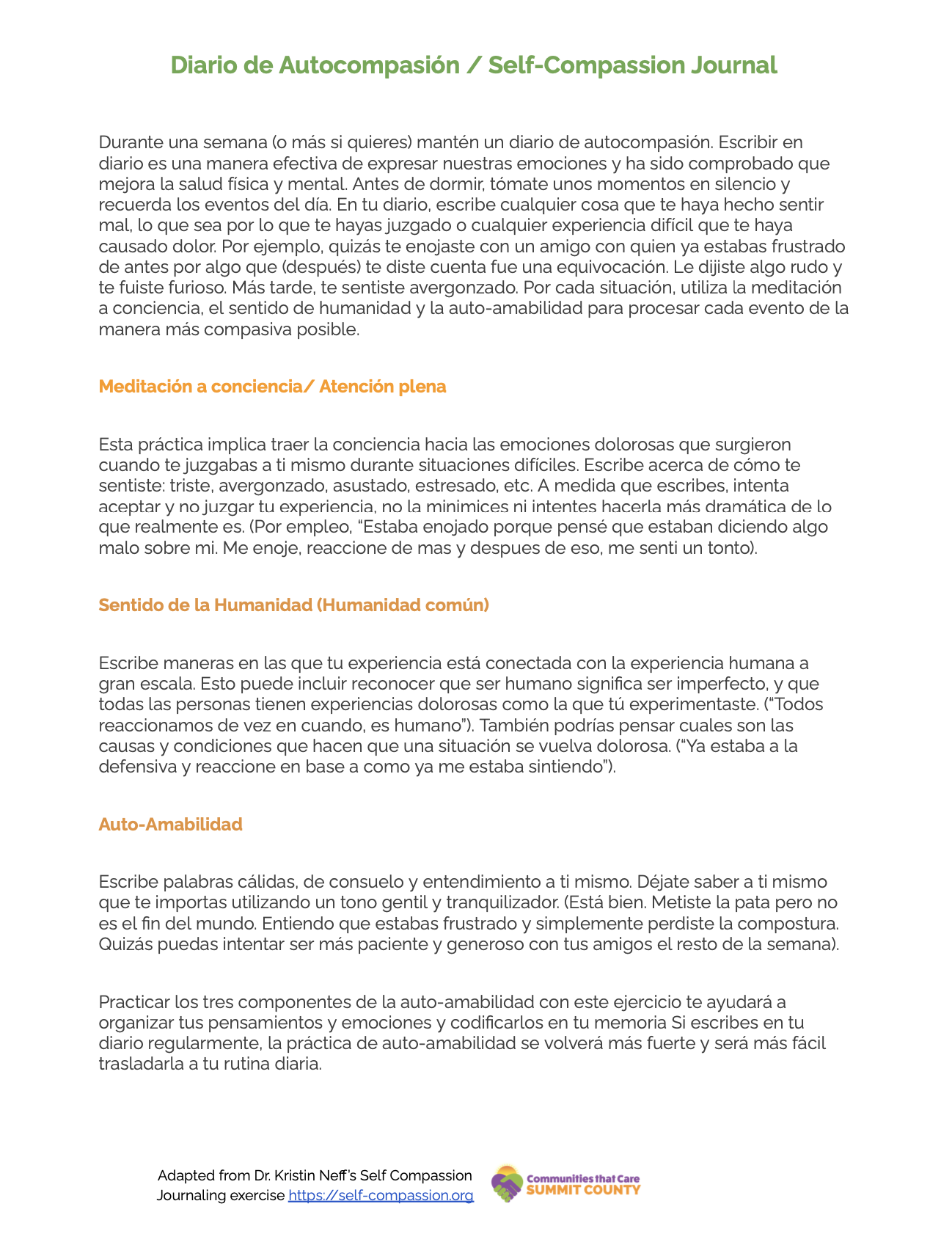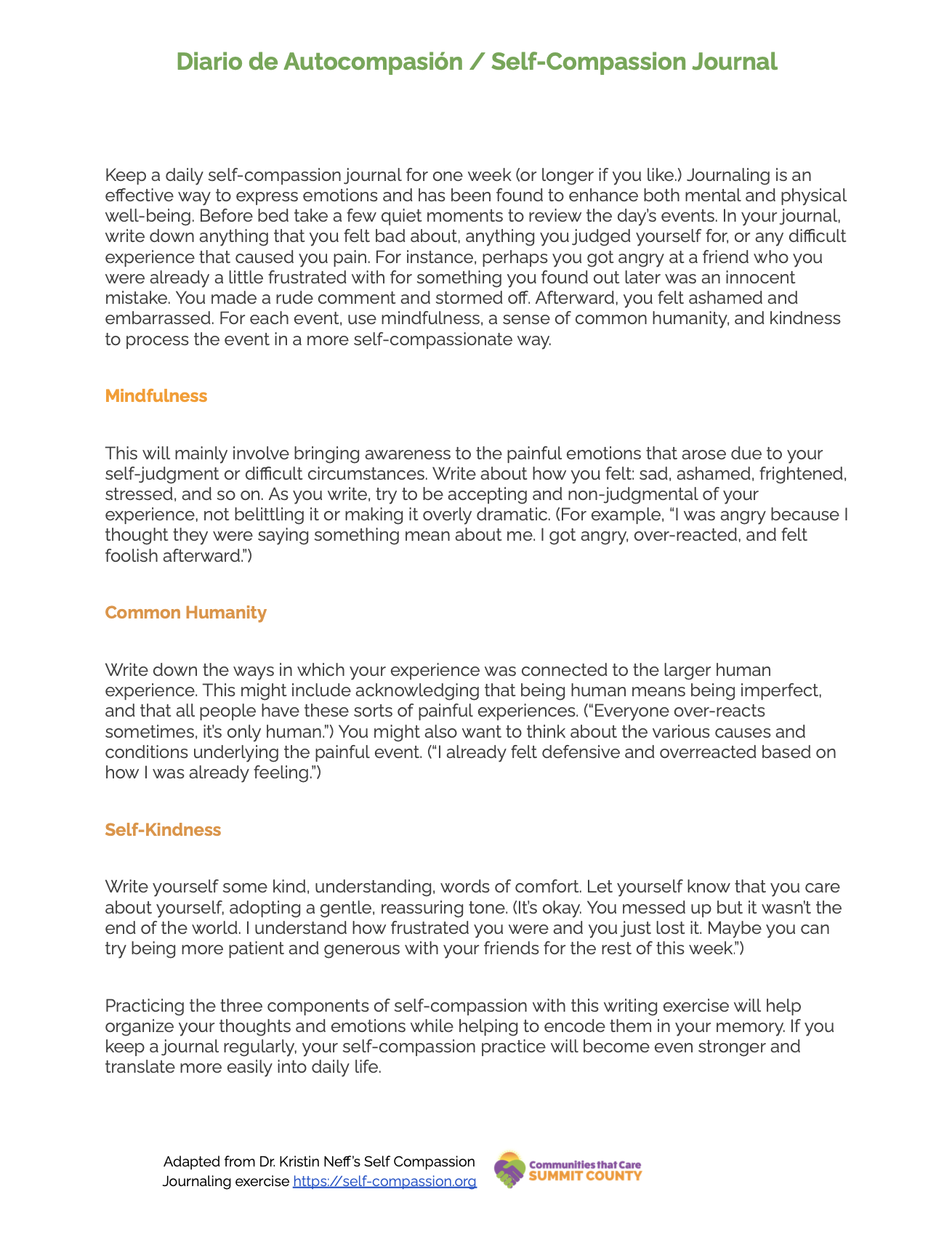
|
Back to Success Stories
Dinner at the Diner
Hosted by:
Communities That Care Summit County

Please briefly describe your Communities Talk activity.
In April 2023, CTC Summit County’s Youth Ambassadors hosted an open house for teens in the community to talk with one another in a safe, alcohol-free, drug-free supervised environment at a local restaurant. Organically, our current youth ambassadors facilitated a conversation about school culture that lead to conversations about mental health and the need for our schools to address mental health in a more proactive manner. We had signage with QR codes for a mental health toolkit written in Spanish and English and created by one of our youth ambassadors. We shared a journaling tool of self-kindness along with a gift of a journal and a nice pen. We asked for feedback on the gathering through a survey to better inform future gatherings. Dinner was provided at no cost to attendees. It was a huge success! We invited the participants back for a second Dinner at the Diner discussion, which took place in May. We had nine youth join us in May.

How does alcohol and other drug misuse affect your community?

In Summit County, we have distinct cultural influences. A resort lifestyle using alcohol often in celebration, a rural lifestyle with the “pick-yourself-up-by-your-bootstraps” mentality as well as a robust Latino community. All of these communities treat mental health and substance use differently; however, stigma plays a role in how we are handling or not handling these very real issues. In one of our school districts, there has been a clear need request for talking about mental health and drug and alcohol use—not just a “don’t do it” campaign and assembly, but a deeper connection and conversations around the topic. There have been at least three known overdoses and suicides in the last 2 years in our schools. There is a rise in vaping among students as well, which is very troubling.

Which prevention strategy(ies), as defined by SAMHSA’s Center for Substance Abuse Prevention, best fit your Communities Talk activity?
- Community-Based Process Strategy - focuses on enhancing the capacity of the community to address AOD issues through organizing, planning, collaboration, coalition building, and networking.
- Education Strategy - focuses on “two-way” communication between the facilitator and participants and aims to improve life/social skills such as decision making, refusal skills, and critical analysis.
- Alternative Strategy - focuses on redirecting individuals from potentially problematic situations and AOD use by providing constructive and healthy events/activities.

What goal(s) did you hope to accomplish with your Communities Talk activity?
- Start a youth-led coalition on alcohol and/or other drug misuse prevention.
- Create a safe, alcohol-free drug-free supervised environment where teens can connect and feel a sense of belonging with others.

Did you accomplish your goal(s)?
Yes

How did you overcome these challenges?
This was our first Communities Talk activity. We didn’t encounter challenges planning it.

What are your next steps?

- Host follow-up meetings or activities
- Expand our coalition with new partnerships in the community
- Create a public education campaign to raise awareness and/or change behaviors around underage drinking (i.e., create PSAs and other promotional materials)

Organizations that conduct Communities Talk activities often involve other organizations in the planning and execution of events. Please indicate which type(s) of organizations you involved in your activity planning.
- Faith-based based organizations
- Youth-led organizations
- Secondary schools

Which of the following best describes the primary audience(s) for your Communities Talk activity?

How did you reach and engage your primary audience(s) to encourage them to participate in your activity?
We reached our primary audience—youth—through personal invitations to youth already connected to our ambassador program and those who have participated in our events in the last year. We emailed our coalition members and connections to share the information with youth in their communities—this included local pediatricians, faith-based organizations, school advisors and counselors, local organizations serving youth, and so on.<span class="NormalTextRun

Which Communities Talk resources (or other SAMHSA resources) were most helpful for your activity?

- Communities Talk website
- Communities Talk toolkits
- Communities Talk Find an Activity Map
|
|
Return to Success Stories